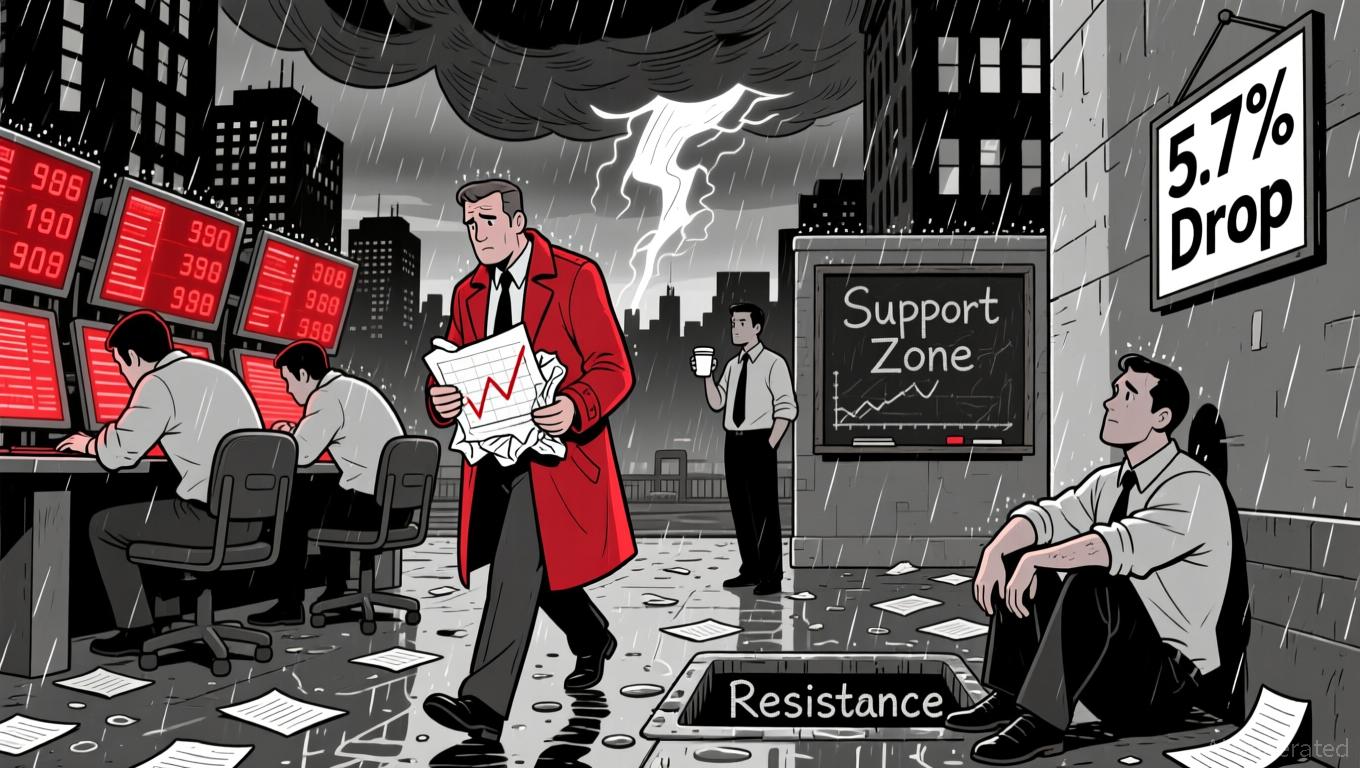APAC Leads Global AI Growth with Emphasis on Human-Focused Approaches
- APAC leads global AI adoption with 26% of firms investing $400k-$500k in generative AI, driven by CEO-led strategies (33% APAC vs 18% North America). - 91% APAC employees receive AI training, supporting rapid deployment as energy management markets grow from $56B to $219B by 2034 via AI analytics and blockchain. - Pegasystems and Ambarella showcase AI integration in enterprise automation and computer vision, while SoundHound AI leverages $269M liquidity for strategic acquisitions. - Challenges persist fo
As organizations move from simply testing artificial intelligence to fully integrating it into their main business functions, specialists stress the importance of keeping people at the center to promote ethical use and lasting progress. This shift is happening across multiple sectors, with companies making significant investments in AI-powered technologies while also addressing issues such as employee adaptation and regulatory oversight.
The Asia Pacific region stands out as a frontrunner in embracing AI, with 26% of its companies allocating between $400,001 and $500,000 to generative AI projects—surpassing North America (19%) and Europe (17%). Frederic Giron, VP and senior research director at

Business strategies are evolving in response. For example, Pegasystems Inc.
Financial strength is also influencing the pace of AI growth. For instance, SoundHound AI reported $269 million in cash and $42 million in third-quarter revenue, enabling investments in platform improvements, acquisitions, and international expansion. The company’s purchase of Interactions, a leader in automated customer service,
Despite these strides, obstacles remain. High upfront expenses and the complexity of integration continue to challenge small and mid-sized businesses, while regulatory standards are still developing.
Disclaimer: The content of this article solely reflects the author's opinion and does not represent the platform in any capacity. This article is not intended to serve as a reference for making investment decisions.
You may also like
Trump’s Federal Reserve Shakeup Raises Concerns Over Stagflation and Divides Within GOP
- Trump announced his Fed chair pick but withheld the name, criticizing resistance to removing Powell before his 2026 term ends. - Shortlisted candidates include Waller, Bowman, and Rieder, with Trump hinting at a "standard" choice amid political tensions. - The dispute with Rep. Greene over Epstein files highlights GOP fractures, as Trump accused her of betraying party loyalty. - Critics warn politicizing the Fed risks stagflation, while the Epstein files debate underscores transparency vs. loyalty tensio

Nebraska and Wyoming: The Competition for Leadership in Crypto Banking Intensifies
- Nebraska grants first digital asset bank charter to Telcoin, sparking territorial dispute with Wyoming, a crypto banking pioneer since 2017. - 43-day government shutdown disrupted 680,000 Maryland SNAP recipients and caused 5M travel disruptions due to air traffic controller shortages. - Trump's $82M bond purchases and military strikes on drug-smuggling vessels face conflict-of-interest concerns and international backlash. - Fed credibility questioned after ex-governor Adriana Kugler resigns over illegal

YFI Drops 5.76% Over the Past Week as Overall Market Shows Weakness
- YFI fell 5.76% in 7 days and 44% annually, reflecting broader market weakness and risk-off sentiment. - Analysts link declines to macroeconomic uncertainty, profit-taking, and shifting investor psychology despite no direct catalysts. - Mixed sector updates (Eltek, iQIYI , Zymeworks) highlight varied asset-class responses to current economic conditions. - YFI remains a key digital asset indicator, with stabilization signals closely monitored amid ongoing downward pressure.

Bitcoin’s Abrupt Decline: Should Investors See This as a Chance to Buy or a Cautionary Signal?
- U.S. regulatory changes (GENIUS Act) shifted focus to stablecoins, boosting altcoins while Bitcoin lagged with a 6% price rise. - Institutional investors withdrew $2.9B from crypto ETFs in Q3 2025, exacerbating Bitcoin's decline below $90,000 amid high interest rates. - On-chain data shows extreme fear (index at 10) and whale activity, suggesting a mid-cycle correction rather than a prolonged bear market. - Macroeconomic factors, including AI-driven capital shifts and high yields on traditional assets, f